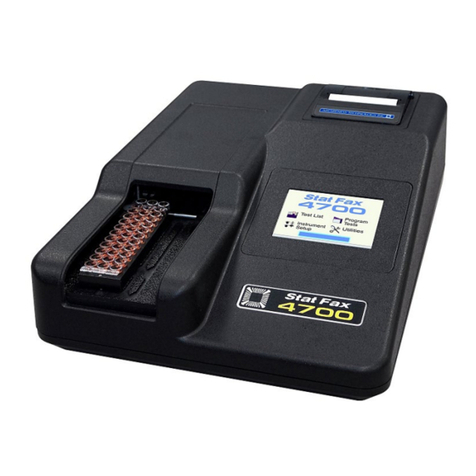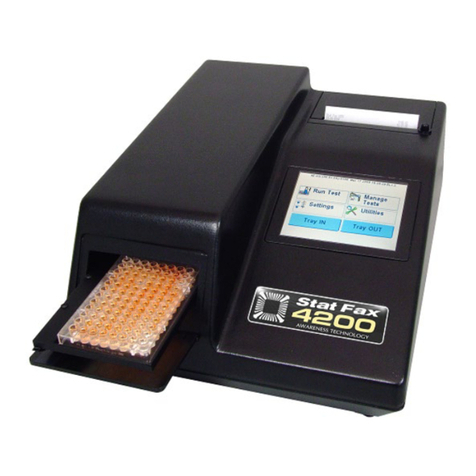
4.4.6 Linear Regression Mode ................................................................................................. 48
4.4.7 Cubic Spline Mode .......................................................................................................... 48
4.4.8 Dose Response Mode..................................................................................................... 49
4.4.9 Polynomial Regression Mode ......................................................................................... 49
4.4.10 4-Parameter and 5-Parameter Logistic ......................................................................... 50
4.4.11 % Absorbance Mode ..................................................................................................... 51
5. ChroMate®Manager Software...................................................................... 52
5.1 Opening ChroMate®Manager................................................................................................ 52
5.1.1 Toolbar Icons................................................................................................................... 52
5.2 Management Menu ................................................................................................................ 53
5.2.1 Test Count ....................................................................................................................... 54
5.2.2 New Assay Calibration Data ........................................................................................... 54
5.3 Tests Menu ............................................................................................................................ 55
5.3.1 Read Plate Absorbance .................................................................................................. 55
5.3.1.1 Kinetic Read using Read Plate Absorbance .......................................................... 56
5.3.1.2 Excel Export using Read Plate Absorbance........................................................... 57
5.3.2 Create Assay................................................................................................................... 58
5.3.2.1 Assay Basic Parameters ........................................................................................ 58
5.3.2.2 Calibration – Standard Properties .......................................................................... 58
5.3.2.3 Calibration - Curve Valid Time ............................................................................... 59
5.3.2.4 Calibration – Blank Properties................................................................................ 59
5.3.2.5 Calibration – Samples ............................................................................................ 60
5.3.2.6 Calibration – Controls ............................................................................................. 60
5.3.2.7 Calibration – QC Criteria ........................................................................................ 61
5.3.2.8 Interpretation Settings ............................................................................................ 62
5.3.3 Edit Assay ....................................................................................................................... 63
5.4 Lot # Registration Menu......................................................................................................... 64
5.5 QC Tracking Menu................................................................................................................. 65
5.6 Sample Database .................................................................................................................. 66
5.6.1 Add Sample ID ................................................................................................................ 66
5.6.2 Modify Sample ID ............................................................................................................ 67
5.6.3 Delete Sample ID ............................................................................................................ 67
5.6.4 View Log.......................................................................................................................... 68
5.6.5 Import Patient Record ..................................................................................................... 68
5.6.6 Export Patient Record ..................................................................................................... 69
5.6.7 Search Patient Record .................................................................................................... 69
5.7 Settings .................................................................................................................................. 70
5.7.1 Comm Port, Database, Report Settings.......................................................................... 70
5.7.1.1 Startup .................................................................................................................... 70
5.7.1.1.1 International Calibration Factor (ICF) .................................................................. 71
5.7.1.2 Sample Database Settings ..................................................................................... 71
5.7.1.3 Result Acceptance.................................................................................................. 72
5.7.1.4 Report Appearance ................................................................................................ 72
5.7.1.5 Report Output ......................................................................................................... 73
5.7.2 Custom Report Settings .................................................................................................. 74
5.7.3 Select Language ............................................................................................................. 75
5.8 Maintenance........................................................................................................................... 76
5.8.1 Voltage Meter .................................................................................................................. 76
5.8.2 Firmware Update............................................................................................................. 77
5.8.3 Calibration Lock/Unlock................................................................................................... 77
5.9 Help........................................................................................................................................ 78
6. Troubleshooting............................................................................................. 79
6.1 Messages............................................................................................................................... 79






























